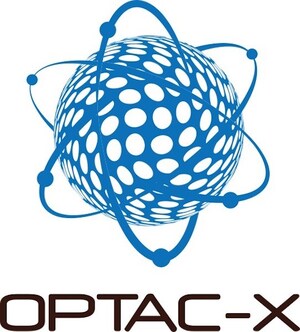ORLANDO, Fla., March 1, 2024 /PRNewswire/ -- OPTAC-X's tele-EMS technology with hybrid cellular and SATCOM capabilities that is currently being tested in a Mayo Clinic pilot proved immune to last week's nationwide cellular service outage. It could be the key to more resilient communications for first responders who saw FirstNet – the dedicated broadband network for first responders -- go down for several hours on Feb. 22.
OPTAC-X, a telehealth leader with remote physician and tele-expert networks that are powered by Vantiq software, announced last year it had entered into a know-how agreement with Mayo Clinic for the use of OPTAC-X's hybrid LTE-global SATCOM telehealth technology with patients in the ambulance. The technology, which operates on both cellular/LTE telecommunications and LEO and GEO satellite communications systems, allows physicians to connect to pre-hospital patients anywhere at any time regardless of local wi-fi or cellular availability. It enables emergency physicians to see and hear in real time what EMS personnel see and hear, including vital signs, as they treat patients before they arrive at the hospital.
Dr. Patrick Fullerton is the OPTAC-X Founder & CEO with many years of experience as an emergency room physician. He reported its network, as activated for the Mayo Clinic pilot, remained fully functional during the entire cellular service outage last week.
"The abrupt loss of the AT&T communications infrastructure highlights the critical need for EMS, law enforcement and fire departments to have alternate communication abilities with other agencies and hospitals coordinating first response and receiving critically ill patients or mass casualty events," said Fullerton. "The temporary loss of cellular communications is not a matter of if, but when. Considering the reality of cyber threats to national communications platforms, it is imperative that prehospital teams have an alternate form of resilient, reliable communication."
According to Keith Barr, CTO of OPTAC-X, its immunity to last week's cellular service outage lies in its calculated redundancy. "The OPTAC-X system begins with a flat and highly portable Kymeta satellite dish. The dish leverages two separate cell networks and GEO. Should one cellular network go down, then the system would fail over to the second. If both go down, then it could still function via GEO SATCOM," said Barr. "By combining terrestrial systems like cellular service and a celestial system like SATCOM, OPTAC-X remains resilient despite challenges that often bring other networks down."
The OPTAC-X telehealth system leverages its exclusive LTE and SATCOM services partner, Kymeta Corporation, the world's leading company for flat-panel antennas and on-the-move SATCOM, to deliver industry leading global LTE and SATCOM capability. Kymeta's software-enabled, metamaterials-based electronically steered antenna (ESA) provides mobile satellite and cellular communications.
OPTAC-X senior advisory board member and retired Brigadier General H.B. Gilliam sees an opportunity for OPTAC-X's unique technology outside of error-driven outages. He's responded to more than 20 natural disasters during a decorated military career that spanned 34-years with the U.S. Army and National Guard.
"The OPTAC-X system is dual primed for depth and continuity whether it be for fire, law enforcement or emergency medical services or all of these together," said Gilliam. "If in-place communications systems are wiped out by a natural disaster, not only can OPTAC-X function in such a scenario, but it also can provide great interoperability across all disciplines and help leaders coordinate their efforts."
About OPTAC-X:
For more information, please visit optacx.com.
About VANTIQ:
Visit VANTIQ's website at https://vantiq.com.
About Kymeta
For more information, visit www.kymetacorp.com.
Media Contact: Joel Staley, 407-242-9994, [email protected]
SOURCE OPTAC-X
WANT YOUR COMPANY'S NEWS FEATURED ON PRNEWSWIRE.COM?
Newsrooms &
Influencers
Digital Media
Outlets
Journalists
Opted In





Share this article